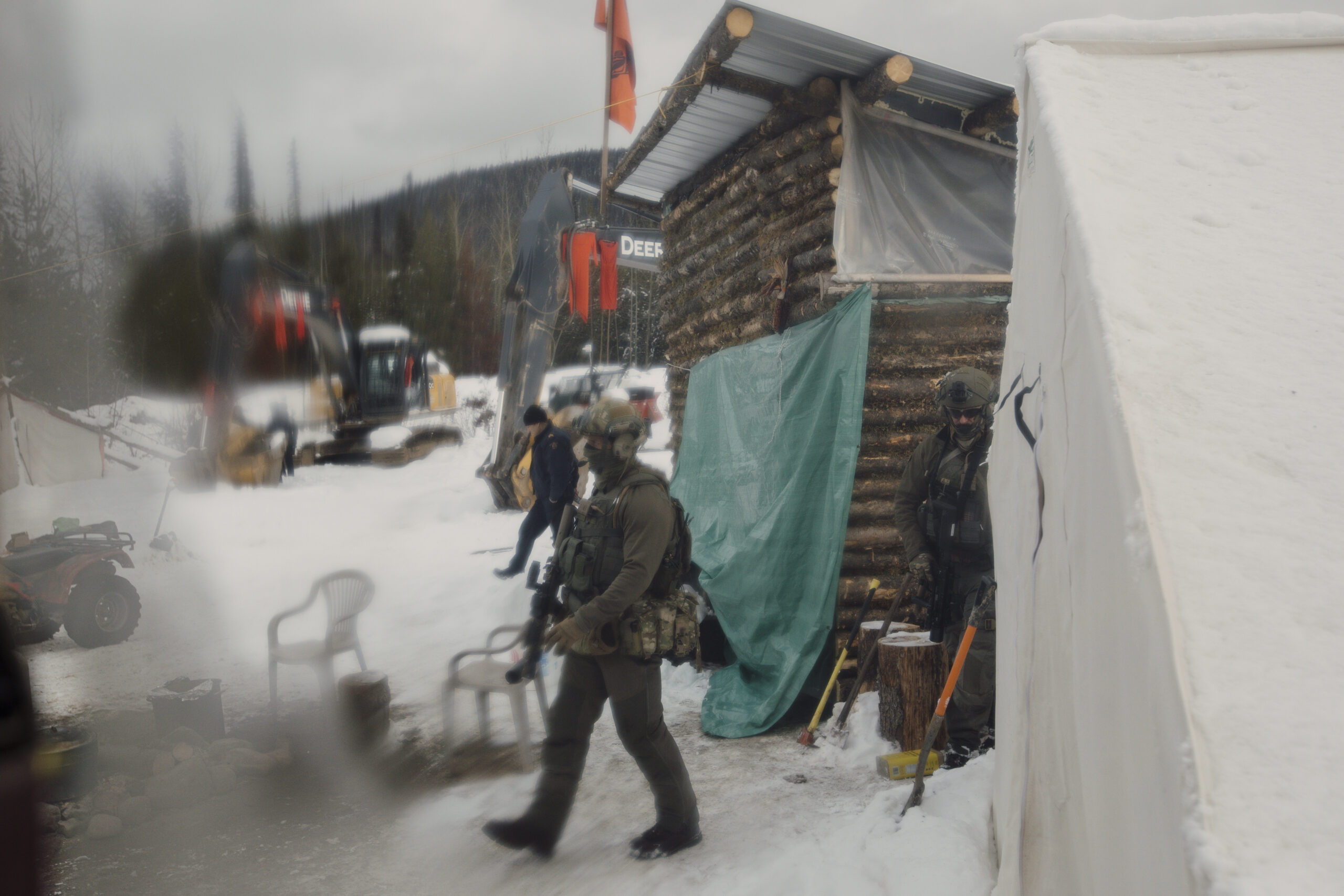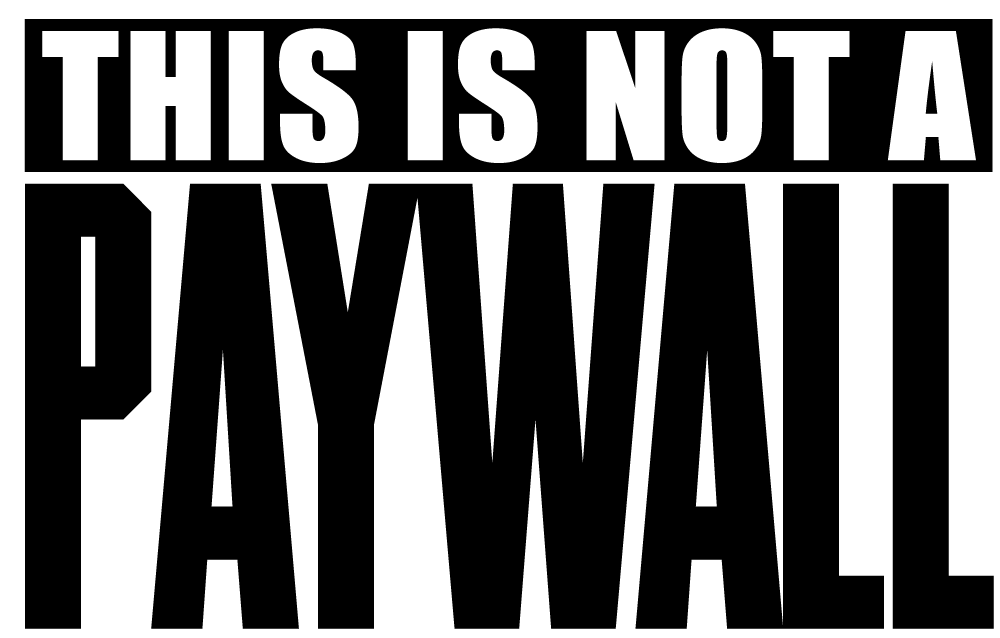Who is Amber Bracken?
Amber Bracken is a 38-year-old freelance journalist based in Edmonton, Alta. She works with The New York Times, The Globe and Mail and National Geographic, among other outlets, and is a two time World Press winner — in 2017 and in 2022, when she won the photo of the year. In 2020, Bracken was awarded the Charles Bury President’s Award by the Canadian Association of Journalists for her outstanding contributions to journalism in Canada for her coverage of the Wet’suwet’en crisis for The Narwhal. Bracken was on assignment for The Narwhal at the time she was arrested and in 2022 was recognized with a Pen Canada/Ken Filkow prize for her work there, advancing freedom of expression in Canada.
What is The Narwhal?
The Narwhal is a non-profit online news magazine that publishes in-depth and investigative journalism about the natural world in Canada. Launched in 2018 with two employees, The Narwhal has a staff of 22. The Narwhal does not have a paywall or run any advertising, instead turning to its readers to make its reporting available for free to everyone. In less than five years, The Narwhal has won close to 20 national journalism awards, including a World Press Freedom award, the Canadian Journalism Foundation’s Jackman Award and a Digital Publishing Award for general excellence.
What steps had Bracken taken to identify herself as a journalist at the time of arrest?
Bracken carried a letter of assignment in her pocket, had two press tags attached to her equipment and told RCMP officers she was a journalist. A member of The Narwhal’s staff had also written to RCMP the day before Bracken’s arrest to alert them to her presence as a journalist on assignment in Wet’suwet’en territory.
What does this lawsuit aim to accomplish?
This case aims to establish meaningful consequences for police when they interfere with the constitutional rights of journalists covering events in injunction zones, including both journalists’ liberty rights and the freedom of the press as protected by section 2(b) of the Charter of Rights and Freedoms. We hope to clear a path for all journalists in Canada to do their work without risk of police interference.
The lawsuit seeks declarations from the court that Bracken’s liberty rights and The Narwhal and Bracken’s press freedom rights were unjustifiably breached. The Narwhal and Bracken are also suing for damages for Bracken’s wrongful arrest and detention and the interference with their constitutional rights.
Why was Bracken on assignment for The Narwhal?
Bracken was documenting an ongoing dispute between Coastal GasLink Pipeline Ltd., a subsidiary of TC Energy, and hereditary leaders of the Wet’suwet’en Nation. The Coastal GasLink pipeline is intended to move natural gas from northeast B.C. to a liquefied natural gas terminal under construction by LNG Canada in Kitimat, B.C. The pipeline’s right-of-way runs through the unceded territory of the Wet’suwet’en Nation and is opposed by hereditary leaders of some of the nation’s clans. This dispute is a newsworthy event of broad interest to the Canadian public and is relevant to public discourse about climate change, reconciliation with Indigenous nations, the roles of hereditary and elected Indigenous leadership, resource extraction, the role of the court issuing injunctive relief against the public at large on behalf of private corporations and the conduct of the RCMP while enforcing such injunctions.
Why did Bracken need to be inside the Tiny House to document police actions?
The RCMP maintained an access control point at the 27.5 kilometre-point on Morice Forest Service Road on Nov. 19, 2021, prohibiting access to anyone wanting to witness the enforcement events, including media.
In view of the exclusion zone established by police, and based on her past experiences reporting in the territory of the Wet’suwet’en Nation, Bracken knew that if she was outside of the Tiny House, she would most likely be immediately removed from the area by the RCMP and unable to document the arrest events on camera. Accordingly, she decided to remain inside the Tiny House and take photos of the events from a position against a wall, furthest away from the door. She had her letter of assignment and identification readily accessible in her jacket front-pocket, her press tags clearly visible on her bag and her two professional-grade cameras on straps around her neck and shoulder.
As a result of establishing and enforcing the exclusion zone, apart from Bracken’s work and the work of documentary filmmaker Michael Toledano, the RCMP ensured that their enforcement actions and arrests were carried out without any observation or documentation by the media. In addition, there were no observers from the Wet’suwet’en Nation or members of the public permitted to witness the events. The only images of the arrests by a daily news reporter were Bracken’s, which were significantly delayed in being released as a result of the seizure of her cameras and her arrest and detention.
What has happened in the case so far?
In its October 2023 court filing in response to The Narwhal’s lawsuit, the RCMP suggest Bracken was not engaged in legitimate journalism when she was covering the Wet’suwet’en conflict for The Narwhal in 2021. The Narwhal ardently disagrees with this claim. The Narwhal subsequently filed a reply to the RCMP’s filing, asserting, among other things, that Bracken was situated in the Tiny House for journalistic purposes on the day of her arrest.
Who are the lawyers for The Narwhal and Amber Bracken?
The lawyers representing The Narwhal and Amber Bracken are Sean Hern KC and Alison Latimer KC. Hern represented the Canadian Association of Journalists and a coalition of news organizations (including The Narwhal) in a case at the B.C. Supreme Court, which was successful in requiring the RCMP to grant media full access to the blockades at Fairy Creek on Vancouver Island. Latimer has advanced a number of landmark constitutional cases, including cases establishing a right to medical assistance in dying and limiting the use of solitary confinement in federal prisons.
How is this case different from previous cases involving the media and police?
Until now, media organizations have primarily been defending themselves and trying to secure access for media within the short timeframes of ongoing events. This case is a more proactive undertaking to address issues of infringements on press freedom and to ensure that Canadian police forces face real consequences when they break the law.
How might this court case further the law beyond the Justin Brake decision regarding Muskrat Falls?
In 2016, Justin Brake was charged criminally with mischief and faced civil contempt proceedings after staying with a group of largely Indigenous protesters at Muskrat Falls, a controversial hydroelectric project in Labrador. In 2018, the Court of Appeal of Newfoundland and Labrador ruled that when a journalist is covering protests by Indigenous people, the following should be considered when deciding whether they should be excluded from an injunction order:
- The person is engaged in apparent good faith in a news-gathering activity of a journalistic nature;
- He or she is not actively assisting, participating with or advocating for the protesters about whom the reports are being made;
- He or she does no act that could reasonably be considered as aiding or abetting the protestors in their protest actions or in breaching any order that has been already made;
- He or she is not otherwise obstructing or interfering with those seeking to enforce the law or any order that has already been made or is not otherwise interfering with the administration of justice;
- The matters being reported on are matters that can broadly be said to be matters of public interest. Particular consideration should be given to protests involving aboriginal issues.
Justice Derek Green also noted that “aboriginal communities have been historically underrepresented in the Canadian media. That makes freedom of the press to cover stories involving Indigenous land issues even more vital.”
While the Brake decision was helpful in defining when a journalist should be excluded from an injunction order, it stopped short of recognizing that the contempt charges breached Brake’s constitutional rights when engaging in journalism.
How could this case further the law beyond the Fairy Creek decision?
Amber’s arrest in Wet’suwet’en territory took place just a few months after the arrests of journalists at the Fairy Creek blockades the previous summer. There, RCMP Community-Industry Response Group officers, the same special unit policing Wet’suwet’en territory, restricted media access to protest zones and created arbitrary media check points that limited the ability of journalists to report on what became the largest act of civil disobedience in Canadian history.
The Canadian Association of Journalists, The Narwhal and other media outlets took the RCMP to B.C.’s Supreme Court for its restrictions on journalists and won.
Justice Douglas Thompson told the court that he agreed with the media coalition’s position, explaining that the RCMP failed to justify the need for having “extensive” exclusion zones for police to do their jobs.
The judge reminded the RCMP to keep in mind “the media’s special role in a free and democratic society, and the necessity of avoiding undue and unnecessary interference with the journalistic function.”
The Fairy Creek decision was the result of an application brought within an injunction proceeding, and was necessarily circumscribed in scope and limited by the procedures available. This case is a separate lawsuit and will be able to address press freedom issues in light of a full evidentiary record presented in a trial.
What is Charter 2(b) of the Charter of Rights and Freedoms and how will this case further that right?
This section of the charter states: “everyone has the following fundamental freedoms:
b. freedom of thought, belief, opinion and expression, including freedom of the press and other media of communication.”
To date, Canadian courts have not recognized the freedom of the press as a distinct constitutional right, protecting the work of gathering and disseminating information for the public benefit without undue interference by the state or state actors. This case will present another opportunity for the courts to consider whether that constitutional recognition is now appropriate.
How does Canada rate globally in terms of freedom of the press?
Canada is ranked 19th globally in terms of freedom of the press by Reporters Without Borders. The ranking notes: “journalists have been arrested while covering protests, particularly those over Indigenous Rights and land usage. These arrests demonstrate that more legal protections, or better application of existing legal protections, are necessary for Canadian journalists.”
How are Amber Bracken and The Narwhal paying for this case?
The Narwhal will engage in various fundraising efforts to support the case. Make a donation to our legal defence fund here.


